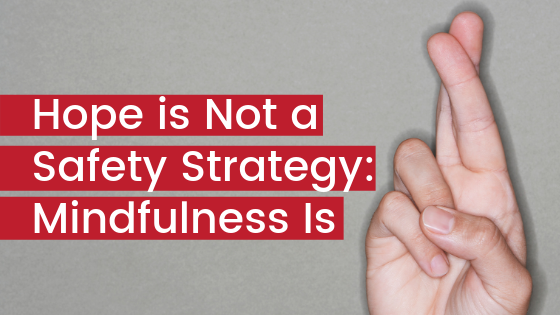Without doubt, your day and night crews will be operating from varying levels of complacency, distraction, rushing and taking short cuts on an ongoing basis. Hoping that someone won’t do something stupid during a shift is futile as a safety strategy because you’re dealing with the inevitability and unpredictability of human nature.
It’s human nature that, in particular when we reach a level of skills and knowledge within our jobs, we switch how we operate. We naturally operate from autopilot for most of our working day or shift, which helps us do our jobs efficiently but on the flip side, can create complacency.
Monkey Minds
Our distraction is led by the 50,000 plus thoughts we have creating our ‘monkey minds’ – a term defined by Buddha as ‘just as a monkey swinging through the trees grabs one branch and lets it go only to seize another, so too, that which is called thought, mind or consciousness arises and disappears continually both day and night.’ A natural phenomenon, but not the best frame of mind to be in when operating machinery towards the end of a shift.
We will also always instinctively take the path of least resistance, which finds us rushing and taking short cuts despite our best intentions. Do you ever go out in the sun without putting cream on? Or run across a busy road instead of walking down to the pedestrian crossing? Walk downstairs with bags to carry while on the phone? As humans, we are almost always attracted to the adrenalin rush of ‘risky’ behaviour, being sucked in even with the small actions that can create big issues should something go wrong.
Mindfulness
If we want people to be safer, we need to influence our unconscious processes, both individually and as a team. The one thing that can help us check in on the risk and be more present to the consequences of what we’re doing is mindfulness.
Mindfulness is essentially the ability to be fully present – 100% in the now – the benefits of which will help raise our situational awareness, our ability to influence our state and make clearer choices and decisions. It also helps break autopilot, which in safety situations ensures your operators are checking in on what they’re doing and not just following patterns unconsciously.
There are so many easy, simple and receptive mindful tools that you can introduce to your team. They are all ridiculously simple and equally powerful.
Practical Exercise
To start with, the simple conscious breath and pause is one that we can all get into the habit of using. The more we train our brains to pause before we respond to something, the more space it creates for us to make a conscious decision about whether or not what we’re about to do is the right choice. Anyone can benefit from this – from drivers who need to interrupt their cruise control, to operators who need to be aware of a change in the sequence of their routine, and to managers who need to create more intent behind their communication style.
The box technique, used even by the Navy SEALS, is one particularly popular one I teach in my INSTINCT(C) program (you can read all about it here) as is some focused breathing and mantras such as ‘Where are my boots? Where my boots are is where my head needs to be.’ When teams adopt this mantra, they often ask each other ‘Mate, where are your boots?’ as a trigger to transport the teammate mentally into the immediate present.
A mindful habit is one of the easiest a team can adopt, and it pays to endorse and practice simple mindful techniques to help counteract the constant battle human nature is up against in terms of keeping oneself safe.

